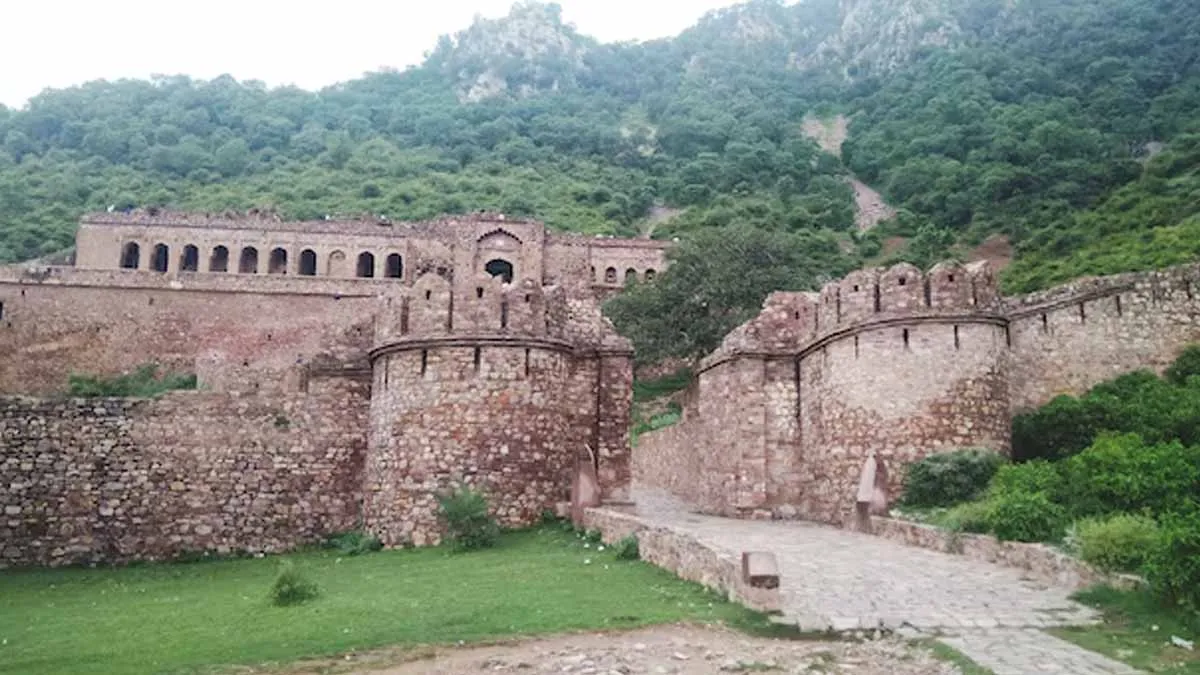
India’s ancient forts are rich in history and spine-chilling legends. This blog rounds up five of the most notoriously ‘haunted’ forts. Each entry includes its historical background, the ghostly lore attached to it, and notes for visitors (such as opening times or cultural references). Let's take a look at the five most haunted forts in India.
Nestled in the Aravalli hills, Bhangarh Fort is often called India’s most haunted fortress. Built in 1573 by Raja Bhagwant Das of Jaipur, it was intended as a royal residence. According to legend, a tantric (black-magic priest) cursed the fort after his advances toward Princess Ratnavati were spurned. Since then, locals say the curse ruined the town: purportedly, ‘voices of spirits’ and unexplained lights plague the ruins. Today, the Archaeological Survey of India strictly forbids any entry after sunset. Tourists by day report an eerie atmosphere, and many notice warning signs around the site. In popular culture, Bhangarh has featured in documentaries and travel shows about haunted places.

Shaniwar Wada is an 18th-century Peshwa palace-fort in Pune. Constructed in 1736 by Peshwa Bajirao I, it was once the grand seat of Maratha power. Its most famous haunting stems from the murder of young Peshwa Narayan Rao in 1774. Conspirators killed Narayan Rao inside the fort and abandoned his body at the gate. Legend holds that his cries for help can still be heard on full-moon nights. Today, visitors claim to hear phantom footsteps or distant screams, especially near the Narayan Darwaza gate. The fort is open to tourists every day, but entry is not permitted after 6:30 pm. In recent times, it gained fame as a filming location for the Bollywood movie ‘Bajirao Mastani’, and it remains one of Pune’s top historical attractions.

Image Credits: Wikipedia
Perched above Jaipur, Nahargarh (meaning “Abode of Tigers”) was built in 1734 by Maharaja Sawai Jai Singh II. It was intended as a royal retreat and part of Jaipur’s defence. The name comes from a local legend: Nahar Singh Bhomia was a prince who betrayed his duty and was killed, and his spirit supposedly haunted the hill. According to Rajasthan Tourism, the fort’s very name means the tiger’s abode of that ghost. Today, Nahargarh Fort is a well-kept tourist spot, famous for panoramic sunset views over the ‘Pink City’. It’s featured in famous Bollywood movies, such as Rang De Basanti. Visitors report an uncanny feeling as dusk falls, but it remains open to the public by day. Guided tours and photo opportunities at the royal apartments are popular, but always before nightfall.

Don't Miss: 5 Iconic Places You Can’t Miss in Rajasthan, the Land of Kings
Golconda Fort, situated on the outskirts of Hyderabad, was originally a 13th-century stronghold of the Kakatiya dynasty and later the capital of the Qutb Shahi kings. By the 16th century, it was famous for its glittering diamond trade and darker tales. According to folklore, the fort is haunted by Taramati, a legendary courtesan. According to Telangana Tourism, witnesses claim to see a shadowy figure dancing among the ruins at night. Others speak of sudden shrieks or objects moving on their own. Indeed, local guides caution visitors: after dark, entry is strictly forbidden. Aside from ghost stories, the fort is known for its ingenious acoustics and light show. During the daytime, it’s a huge tourist draw, with many hidden temples and royal pavilions to explore. Evening light-and-sound shows dramatise Golconda’s history, though some admit the stories of ghosts add extra thrill to a night-time visit.

Don't Miss: 5 Largest Forts In India You Must Explore
The ruins of Feroz Shah Kotla lie amidst the city park in Delhi.Built in the 14th century by Sultan Feroz Shah Tughlaq, the stone walls now house crumbling pavilions and the famous Ashokan pillar. Over the decades, this site gained a reputation for the supernatural. Legend says djinns (Islamic spirits) inhabit the ruins. Delhi’s locals often visit the fort on Thursday nights to offer prayers and sweets to these “genies” in the hopes of fulfilling their wishes. Storytellers say that at dusk, one can hear whispered voices and rustling in the ruins. For thrill-seekers, the Fort is entirely open during the day as a public park, but rumours persist that those who linger too late feel a strange presence. Contemporary media have featured Kotla in ghost documentaries; regardless, history buffs also flock here to admire the medieval architecture, like the Mosque of Feroz Shah and the famed pillar.

Image Credits: Wikipedia
These five forts blend history and hauntings. By day, they are important monuments, but by night their legends linger. All are generally open for daytime visits, though Bhangarh and Shaniwar Wada close at dusk. If you dare to visit, go with respect for the ancient heritage and perhaps a flashlight for the shadows.
Image Credits: Freepik
If you liked this story, then please share it. To read more such stories, stay connected to HerZindagi.
Also watch this video
Herzindagi video
Our aim is to provide accurate, safe and expert verified information through our articles and social media handles. The remedies, advice and tips mentioned here are for general information only. Please consult your expert before trying any kind of health, beauty, life hacks or astrology related tips. For any feedback or complaint, contact us at compliant_gro@jagrannewmedia.com.